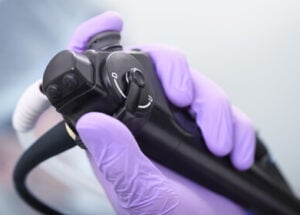Assistive Mobility Devices After Surgery: How to Use Them Right?
April 11, 2025

If you sustain a fracture in your leg or foot, or have a surgical procedure on your lower limb, you may be recommended to use a walking aid while you are in the course of healing or recovery. Using crutches, a cane, or a walker can help keep your weight off your injured or operated leg, assist with balance, and enable you to perform your daily activities in a safe manner.
When you are first learning to use your walking aid, it might feel a bit strange, and your physical therapist will help you get the hang of it. In the beginning, everything you do may seem more difficult. With a bit of learning and practice, most people will be able to quickly gain confidence and learn how to use a walking aid safely.
Make Your Home Safer
Making some simple safety modifications to your home can help prevent slips and falls when using your walking aid:
- Remove throw rugs, electrical cords, food spills, and anything else that may cause you to fall.
- Arrange furniture so that you have a clear walking space between rooms.
- Keep stairs clear of packages, boxes, or clutter.
- Walk only in well-lit rooms and install a nightlight along the pathway between your bedroom and the bathroom.
- In the bathroom, use nonslip bath mats, grab bars, a raised toilet seat, and a shower seat.
- Simplify your household to keep the items you need within easy reach and everything else out of the way.
Crutches
Crutches are a great option if your injury or surgery requires you to get around without putting any weight on your leg or foot. It is ideal for young patients who want more mobility without compromising stability.
Proper Positioning
- When standing up straight, the top of your crutches should be about 1-2 inches below your armpits.
- The handgrips of the crutches should be even with the top of your hip line.
- Your elbows should be slightly bent when you hold the handgrips.
- To avoid damage to the nerves and blood vessels in your armpit, make sure your weight rests on your hands, not on the underarm supports.
Walking
Lean forward slightly and put your crutches about one foot in front of you. Begin as if you were going to use the injured foot or leg, but instead, shift your weight to the crutches. Bring your body forward slowly between the crutches. Finish the step normally with your good leg. When your good leg is on the ground, move your crutches ahead in preparation for your next step. Always look forward, not down at your feet.
Sitting
To sit, always use a sturdy chair. Put your injured foot in front of you and hold both crutches in one hand. Use the other hand to feel behind you for the seat of your chair. Slowly lower yourself into the chair. When you are seated, lean your crutches in a nearby spot. Be sure to lean them upside down; crutches tend to fall over when they are leaned on their tips. To stand up, inch yourself to the front of the chair. Hold both crutches in your hand on your injured side. Push yourself up and stand on your good leg.
Stairs
To walk up and down stairs with crutches, you need to be both strong and balanced. Facing the stairway, hold the handrail with one hand and tuck both crutches under your armpit on the other side. When you are going up, lead with your good foot, keeping your injured foot raised behind you. When you are going down, hold your injured foot up in front, and hop down each step on your good foot. Take it one step at a time. You may want someone to help you, at least at first. If you encounter a stairway with no handrails, use the crutches under both arms and hop up or down each step on your good leg, using more strength.
If you feel unsteady, it may be easier to sit on each step and move up or down on your bottom. Start by sitting on the lowest step with your injured leg out in front. Hold both crutches flat against the stairs in your opposite hand. Scoot your bottom up to the next step, using your free hand and good leg for support. Face the same direction when you go down the steps in this manner.
Canes or Sticks
A cane can be helpful if you have minor problems with balance or stability, some weakness in your leg or trunk, an injury, or pain due to arthritis. If you are elderly, using a single-point cane may help you to walk more comfortably and safely and, in some cases, may make it easier for you to continue living independently.
Proper Positioning
- When standing up straight, the top of your cane should reach your wrist.
- Your elbow should be slightly bent when you hold your cane.
- Hold the cane in the hand opposite the side that needs support. For example, if your right leg is injured, hold the cane in your left hand.
Walking
To start, set your cane about one small stride ahead of you and step off on your injured leg. Finish the step with your good leg.
Stairs
To climb stairs, place your cane in the hand opposite your injured leg. With your free hand, grasp the handrail. Step up on your good leg first, then step up on the injured leg. To come downstairs, put your cane on the step first, then your injured leg, and then, finally, your good leg, which carries your body weight.
Walkers
If you have had total knee or total hip replacement surgery, or you have another significant problem, you may need more help with balance and walking than you can get with crutches or a cane. A walker with four legs will give you the most stability. A walker lets you keep all or some of your weight off of your lower body as you take steps. With a walker, you use your arms to support some of your body weight. As your strength and endurance get better, you may gradually be able to carry more weight in your legs.
Positioning
- When standing up straight, the top of your walker should reach your wrist.
- Your elbows should be slightly bent when you hold the handgrips of the walker.
- Keep your back straight. Don’t hunch over the walker.
- Check to be sure the rubber tips on your walker’s legs are in good shape.
Walking
First, position your walker about one step ahead of you, making sure that all four legs of the walker are on even ground. With both hands, grip the top of the walker for support and move your injured leg into the middle area of the walker. Do not step all the way to the front. Push straight down on the handgrips of the walker as you bring your good leg up so it is even with your injured leg. Always take small steps when you turn and move slowly.
Sitting
To sit back up until your legs touch the chair. Use your hands to feel behind you for the seat of the chair. Slowly lower yourself into the chair.
To stand up, push yourself up using the strength of your arms and grasp the walker’s handgrips. Do not pull on or tilt the walker to help you stand up.
Stairs
Never climb stairs or use an escalator with your walker.







